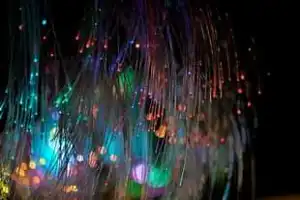Blog Credit : Trupti Thakur
Image Courtesy : Google
Nobel Prize 2024 – Physics
In 2024, the Nobel Prize in Physics was awarded to John J. Hopfield and Geoffrey E. Hinton for their groundbreaking discoveries in machine learning, particularly their work on artificial neural networks. Their contributions have played a key role in developing modern artificial intelligence (AI) technologies.
John J. Hopfield: Associative Memory
John J. Hopfield created a model called the Hopfield network, which functions like a memory system that can store and recall information, such as images. It was inspired by how atomic spins (small physical particles) behave.
The Hopfield network consists of nodes, similar to the pixels in an image, that communicate with each other through connections. These connections mimic the way neurons (nerve cells) in the brain interact. The network is designed to work like a system that minimizes energy, similar to how atomic spins stabilize. When the network is trained, it adjusts the strength of these connections so that the stored patterns become low-energy states, meaning they are stable and easy to recall.
If the network is given an image that is incomplete or unclear, it works to update the nodes to minimize the energy and gradually reconstructs the closest matching image that has been stored in its memory.
Geoffrey E. Hinton: The Boltzmann Machine
Building on Hopfield’s ideas, Geoffrey E. Hinton introduced the Boltzmann machine, which uses ideas from statistical physics to learn patterns from data. While the Hopfield network focuses on recalling specific patterns, the Boltzmann machine is better at finding the common features in data.
The Boltzmann machine is trained by looking at many examples of data. Over time, it learns how to classify and recognize patterns. It can also create new examples that are similar to what it has already seen. This ability made it a powerful tool for advancing machine learning.
Impact on AI and Physics
The work of Hopfield and Hinton has had a huge impact on both AI and physics. Their neural networks are now used in many different areas, such as pattern recognition (like recognizing faces or objects in images) and data analysis. In physics, these models help researchers discover new materials with special properties.
Backgrounds of the Laureates
John J. Hopfield: Born in 1933 in Chicago, USA. He earned his PhD from Cornell University in 1958 and is a professor at Princeton University.
Geoffrey E. Hinton: Born in 1947 in London, UK. He earned his PhD from The University of Edinburgh in 1978 and is a professor at The University of Toronto.
The work of these two scientists has been crucial in shaping the way AI works today, and their contributions continue to impact many fields.
Overview:
The Nobel Prize in Physics was awarded to John Hopfield and Geoffrey Hinton, as announced by the Royal Swedish Academy of Sciences in Stockholm, Sweden on Tuesday.
This year’s Nobel Laureates in Physics have used physics tools to develop methods that form the basis of today’s powerful machine learning, said the official announcement.
John Hopfield created an associative memory that can store and reconstruct images and other patterns in data. Geoffrey Hinton invented a method that can automatically find properties in data, allowing it to identify specific elements in pictures.
Who won Nobel Prize in Physics last year?
Three scientists were awarded last year’s Nobel Prize in Physics for capturing the first split-second glimpse of spinning electrons, a discovery that could improve electronics or aid in disease diagnosis.
The Nobel Prize in 2023 went to physicists Anne L’Huillier, Pierre Agostini, and Ferenc Krausz for their work with electrons, a key part of atoms essential to chemistry, physics, and technology.
Blog By : Trupti Thakur

10
OctNobel Prize 2024 – Physics
Oct 10, 2024Recent Blog
The TechKritiApr 26, 2025
India’s First Quantum Computing VillageApr 24, 2025
India’s Achievement In QKDApr 22, 2025
The V2G TechnologyApr 21, 2025
Country’s Specific Domain By GoogleApr 19, 2025




